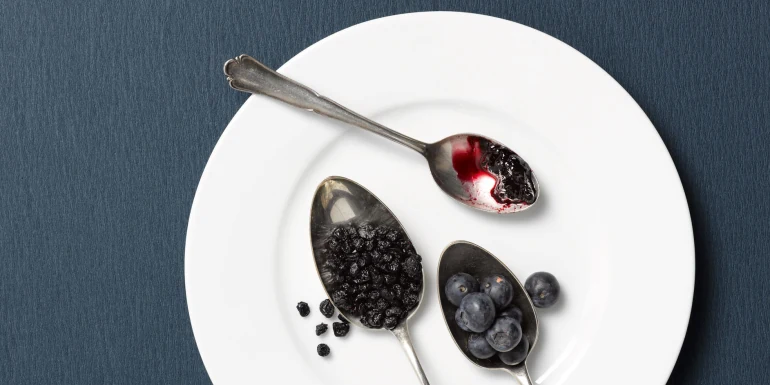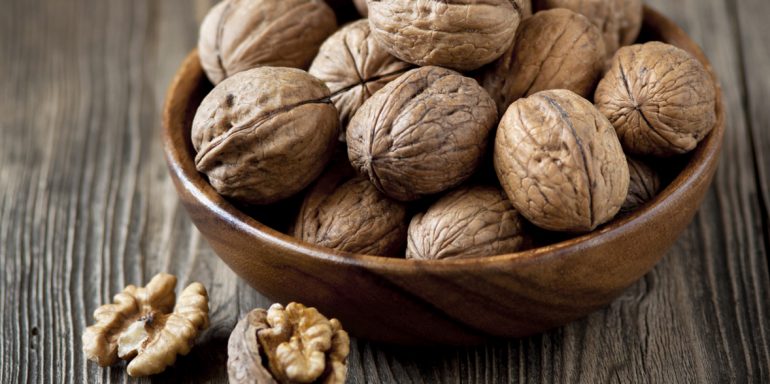
Superfoods: they don’t always have to be exotic
Chia seeds, goji berries and the like are now an integral part of a balanced diet. What are superfoods, what do they offer, and why should we favour local Swiss varieties over more exotic imports?
Health-conscious eaters swear by superfoods. While there has been plenty of talk about superfoods for years now, we still don’t have a clear definition of what they are. Superfoods are said to supply our bodies with numerous valuable nutrients. They are also supposed to help combat fatigue, exhaustion as well as cancer, heart problems and other serious complaints. They’re even said to have miraculous anti-ageing properties. But few of these grand claims are backed up by scientific evidence. True, many of these foods have positive qualities and are very much worthy of the title “super”. But more than anything, the label “superfood” is a useful marketing term.
Superfoods of the world: an overview
Fruits, vegetables, nuts or herbs which contain unusually high concentrations of vitamins, minerals, fibre, amino acids and secondary plant extracts are known as superfoods. But while many domestic varieties offer those qualities, they’re not really regarded as “superfoods”, a term generally reserved for exotic plant products.
A selection of Swiss superfoods
- açai berries
- almonds
- amaranth
- avocados
- baobab powder
- chia seeds
- Chlorella algae
- cocoa
- coconut products
- cranberries
- goji berries
- inca root
- maca root
- maqui berries
- matcha tea
- mesquite powder
- moringa
- papayas
- pomegranates
- quinoa
- rice
- spirulina
When exactly do blackberries grow? And is spinach in season in January? Get an overview with the seasonal table of Swiss superfoods.
Found in South America and China, chia seeds are rich in plant-based protein, filling dietary fibre and valuable omega-3 fatty acids. Peruvian mesquite powder derived from dried bean pods supplies us with fibre, protein as well as iron, zinc, magnesium and calcium. And matcha powder from Japan is rich in amino acids, antioxidants, vitamins A, B, C, E and K as well as magnesium, potassium and calcium.
This concentration of nutrients promises the things we long for – to stay healthy and perform at our best. But the long journey that exotic superfoods take – and the associated CO2 emissions – are alarming. Particularly when we have domestic alternatives which often cost a lot less.
The product you buy may have little of its original concentration of nutrients left – if it’s too heavily processed, for instance, or if it is harvested too early for its long sea journey. And there is recurring discussion about the widespread use of pesticides on imported superfoods. To ensure that fruits and vegetables survive their sea voyages, they are sometimes treated with herbicides that are no longer permitted in Switzerland.
Domestic nutrient bombs: perfect alternatives
For the sake of the environment, if nothing else, we should be looking at local, seasonal products. Ideally, they are grown organically and sold under fair trade conditions. But we don’t tend to categorise domestic fruits, vegetables, seeds or herbs as foods with superpowers. Certainly not broccoli or parsley, even though they’re just as good as the more exotic imports. Another example is linseed, which rivals chia seeds for its concentration of protein, fibre and omega-3 fatty acids. Swiss blueberries, with their high levels of vitamins C and E, iron and antioxidants, can hold their own with the well-travelled aronia berry. Even quinoa has little more to offer than millet or buckwheat. And vitamin-rich sea buckthorn makes a great alternative to pomegranates.
Swiss superfoods
- artichokes
- barley grass
- beetroot
- blackberries
- blueberries
- broccoli
- buckwheat
- chard
- curly kale
- rapeseed oil
- red peppers
- spinach
- sultanas
- sunflower seeds
- wheatgrass
- wild garlic
- wild herbs (such as nettles and dandelion)
Recipes with domestic superfoods in the Helsana Coach app
Curly kale chips, millet porridge, hummus with beetroot – in the Helsana Coach app, you can find recipes including information on ingredients, preparation and nutritional values. Download it now.
How to use superfoods properly: five tips
- Eat a varied diet and pay attention to your portion sizes. That even applies to apparently healthy foods – more is not always better.
- Natural foodstuffs are generally better. The more a product is processed, the fewer nutrients it retains. Additives and flavours are often added in the process, as well. You’re better off eating a handful of fresh blueberries than a blueberry yoghurt which is packed with sugar.
- But if you do opt for convenience foods now and then, why not pep them up with fresh ingredients? Top a ready-made pizza with superfoods like rocket, tomato and onion. Upgrade your tinned soup with pumpkin seed oil and add fresh basil to tomato sauce from the jar.
- Superfoods also come in frozen varieties. Frozen vegetables, fruits and frozen herbs are often richer in vitamins than the fresh alternative. The shock of the cold helps foods retain their true taste – without preservatives. Tip: in summer, put some of your favourite vegetables, berries and herbs in the freezer to use in the colder months. Or why not preserve your fruits and vegetables.
- Your body absorbs vitamins, minerals and other nutrients more readily when you eat foods in the right combination. Useful superfood combinations include brown rice with pulses such as lentils or beans, carrots with vegetable oil, or iron-rich foods such as spinach with peppers or other vegetables high in vitamin C.
We have quick and easy answers to all of your questions, whether you’d like advice on changing diets, excess weight, coping with a diagnosis or a recommended course of treatment.
Further information



Newsletter
Find out more about current health issues every month and get all the information you need about our attractive offers from all Helsana Group companies * delivered by e-mail to read whenever it suits you. Our newsletter is free of charge and you can sign up here:
We did not receive your information. Please try again later.
* The Helsana Group comprises Helsana Insurance Company Ltd, Helsana Supplementary Insurances Ltd and Helsana Accidents Ltd.
